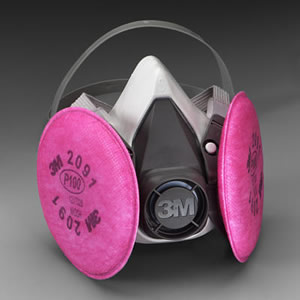Here is a post extracted from my web site, which somehow is less discovered. I wanted it to be found with the Tools label, where labels make a blog more useful. I want to not name too many labels. That I go back and forth between a page and several blogs, tells me the future of free web sharing might be in some new venue. I think that future will be in focused book format. Those who make the effort and earn readership will work hard. They will need small and fair compensation for their insight and work, through something like iTunes. Here is an example:
http://www.inference.phy.cam.ac.uk/sustainable/book/tex/sewtha.pdf
This entry is prompted by dismay in following a thread at Inspection News. People working with insulation must look out for each other, not being tolerant of anything but comfortable, well-fitting, P100 protection: oil proof, filters at least 99.97% of airborne particles. N95 throw-away covers never fit tightly, and are not acceptable.
This is the mask I use, and prefer from my own comparisons. There are many competitor products, and I will not attempt to be fair to others. This one is so comfortable, and out of the field of vision. The comfort is crucial to safety, and is worth any cost. Professional help to ensure good fit is worth any cost. I confess one reason to prefer the compact pancake filter is ability to vacuum away too-rapid dust accumulation. I will vacuum filters several times a day when working in extreme dust, as with blowing or stirring cellulose or low-density fiberglass loose-fill insulation. That is better than choking in a cartridge mask that can not be cleared, not affording new cartridges at of the order of $10 per pair. I am thrifty, but do not begrudge the cost of frequent filter changes.
At August, 2011, here is added comment. I have been making use of ideal weather, to paint another side of my house. It's sixty years old, and at thirty got painted with an early form of latex paint. All of that has to be delicately scraped off, with reveal and some disturbance of covered lead-base paint and primer. I'm removing seriously-checked soffit paint. I studiously wear this 3M respirator. Is it the right one for weatherization work, and for lead too? Here is one take on that, from PK Safety, confirming prescription of 2091 filters. 3M makes a confusing call. For various lead forms, they recommend disposable N100 respirators. There is never a call for more-expensive and better fitting P100 respirators. Surely N100 is a minimum; P100 is better.





